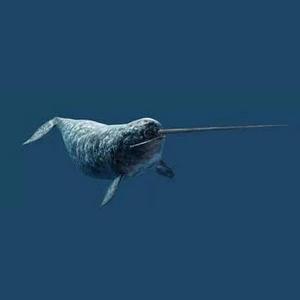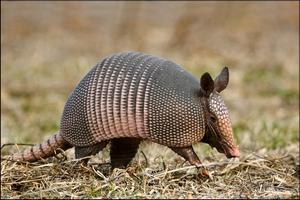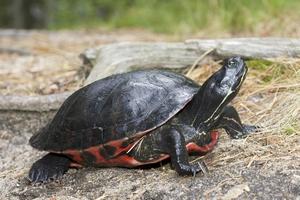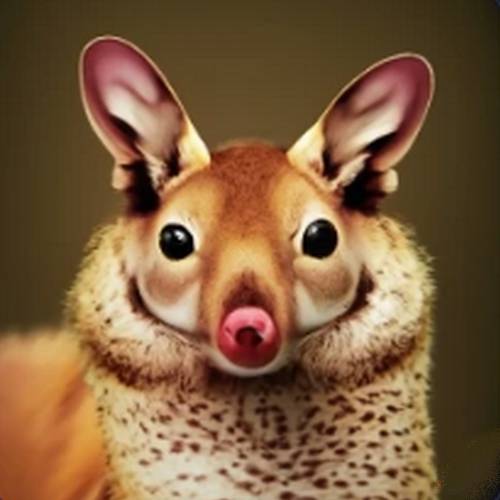
1) Narwhal : Certainly! The narwhal is a fascinating Arctic marine mammal known for its long, spiral tusk, which is actually a tooth that can grow up to 9 feet (2.7 meters) in length. Here are some key facts about this unique animal:
Appearance: Narwhals are medium-sized whales, with adults typically measuring around 13-18 feet (4-5.5 meters) in length and weighing 1,500-3,500 pounds (700-1,600 kilograms). They have a distinctive mottled gray or brown body, and their tusk is usually found only in males (though occasionally in females as well).
Habitat: Narwhals live in the Arctic waters of Canada, Greenland, Norway, and Russia. They are adapted to living in icy conditions and can dive to depths of up to 5,000 feet (1,500 meters) to hunt for fish and squid.
Diet: Narwhals are carnivores, feeding mainly on fish such as Arctic cod and Greenland halibut, as well as squid and shrimp.
Behavior: Narwhals are social animals, living in groups of 5-10 individuals, though sometimes groups can number in the hundreds. They communicate with a variety of vocalizations, such as clicks, whistles, and trills. Narwhals are also known for their impressive diving abilities, which allow them to stay underwater for up to 25 minutes.
Appearance: Narwhals are medium-sized whales, with adults typically measuring around 13-18 feet (4-5.5 meters) in length and weighing 1,500-3,500 pounds (700-1,600 kilograms). They have a distinctive mottled gray or brown body, and their tusk is usually found only in males (though occasionally in females as well).
Habitat: Narwhals live in the Arctic waters of Canada, Greenland, Norway, and Russia. They are adapted to living in icy conditions and can dive to depths of up to 5,000 feet (1,500 meters) to hunt for fish and squid.
Diet: Narwhals are carnivores, feeding mainly on fish such as Arctic cod and Greenland halibut, as well as squid and shrimp.
Behavior: Narwhals are social animals, living in groups of 5-10 individuals, though sometimes groups can number in the hundreds. They communicate with a variety of vocalizations, such as clicks, whistles, and trills. Narwhals are also known for their impressive diving abilities, which allow them to stay underwater for up to 25 minutes.
2) Naked mol-rat : The naked mole-rat is a fascinating creature, and an intriguing subject of study for biologists and researchers. This rodent is notable for its unusual appearance and behavior, as well as its unique adaptations to living in harsh underground environments. Here is a brief presentation on the naked mole-rat:
Appearance: As the name suggests, the naked mole-rat lacks fur or hair on its skin, which is a pale pink or yellowish color. It has small eyes and ears, and a long, wrinkled snout that it uses for burrowing. Its body is about 3-4 inches long and weighs only a few ounces.
Appearance: As the name suggests, the naked mole-rat lacks fur or hair on its skin, which is a pale pink or yellowish color. It has small eyes and ears, and a long, wrinkled snout that it uses for burrowing. Its body is about 3-4 inches long and weighs only a few ounces.
3) Nandu : The nandu, also known as the greater rhea, is a large, flightless bird native to South America. It is one of two species of rheas, the other being the lesser rhea.
Size: Adult males can stand up to 5 feet (1.5 meters) tall at the shoulder and weigh up to 90 pounds (40 kilograms), while adult females are slightly smaller, standing about 4 feet (1.2 meters) tall and weighing up to 75 pounds (34 kilograms).
Appearance: The nandu has a long neck, a small head, and a long, thin beak. Its body is covered in brown or grayish-brown feathers, with white feathers on its throat and belly. Its wings are small and not used for flight, but rather for balance and changing direction while running.
Size: Adult males can stand up to 5 feet (1.5 meters) tall at the shoulder and weigh up to 90 pounds (40 kilograms), while adult females are slightly smaller, standing about 4 feet (1.2 meters) tall and weighing up to 75 pounds (34 kilograms).
Appearance: The nandu has a long neck, a small head, and a long, thin beak. Its body is covered in brown or grayish-brown feathers, with white feathers on its throat and belly. Its wings are small and not used for flight, but rather for balance and changing direction while running.
4) Nematode : is just a worme
5) Nene : is a species of waterfowl belonging to the family Anatidae
6) Newt : is a salamander in the subfamily Pleurodelinae
7) Nightingale : is a bird
5) Nene : is a species of waterfowl belonging to the family Anatidae
6) Newt : is a salamander in the subfamily Pleurodelinae
7) Nightingale : is a bird

8) Nine-banded armadillo : The Nine-banded armadillo is a mammal native to North and South America. It is also known as the long-nosed armadillo, and it is one of the most commonly seen armadillo species in the United States.
These animals are small, with a body length of around 2.5 feet and a weight of 12 to 22 pounds. They have a hard, armored shell made of bony plates that cover their back, sides, and tail. The shell is made up of nine bands, which give the animal its name.
The Nine-banded armadillo has a long snout and small ears. They have poor eyesight, but an excellent sense of smell, which they use to find food. They are omnivores and will eat insects, plants, and small animals. They are also known to eat carrion and can sometimes be seen scavenging on the side of the road.
These armadillos are mostly nocturnal, and they spend their days sleeping in their burrows, which they dig with their strong claws. They are solitary animals, except during mating season, which occurs in the summer.
These animals are small, with a body length of around 2.5 feet and a weight of 12 to 22 pounds. They have a hard, armored shell made of bony plates that cover their back, sides, and tail. The shell is made up of nine bands, which give the animal its name.
The Nine-banded armadillo has a long snout and small ears. They have poor eyesight, but an excellent sense of smell, which they use to find food. They are omnivores and will eat insects, plants, and small animals. They are also known to eat carrion and can sometimes be seen scavenging on the side of the road.
These armadillos are mostly nocturnal, and they spend their days sleeping in their burrows, which they dig with their strong claws. They are solitary animals, except during mating season, which occurs in the summer.
9) North American beaver : is a beaver
10) North American porcupine : is a porcupine
11) North American river otter : is a otter
12) North Atlantic right whale : is a whale
13) Northern cardinal : is a bird
14) Northern fure seal : is a seal
15) Northern goshawk : is a bird
16) Northern hairy-nosed wombat : is a wombat
17) Northern hemisphere salmon : is a fish
18) Northern pike : is a fish
10) North American porcupine : is a porcupine
11) North American river otter : is a otter
12) North Atlantic right whale : is a whale
13) Northern cardinal : is a bird
14) Northern fure seal : is a seal
15) Northern goshawk : is a bird
16) Northern hairy-nosed wombat : is a wombat
17) Northern hemisphere salmon : is a fish
18) Northern pike : is a fish

19) Northern red-bellied cooter : The Northern red-bellied cooter (Pseudemys rubriventris) is a species of freshwater turtle found in the eastern United States, ranging from New York to North Carolina. It is a medium-sized turtle, with females typically growing up to 13 inches in length, while males are slightly smaller.
This species is characterized by its distinctive reddish-orange markings on its plastron, or lower shell. The carapace, or upper shell, is typically brown or olive in color, with yellow or cream-colored lines and spots. The head and legs are also brown or olive, with yellow or cream-colored stripes or markings.
Northern red-bellied cooters are primarily aquatic and can be found in a variety of freshwater habitats, including lakes, ponds, rivers, and swamps. They are omnivorous, feeding on a variety of plants and animals, such as algae, aquatic vegetation, insects, and fish.
This species is characterized by its distinctive reddish-orange markings on its plastron, or lower shell. The carapace, or upper shell, is typically brown or olive in color, with yellow or cream-colored lines and spots. The head and legs are also brown or olive, with yellow or cream-colored stripes or markings.
Northern red-bellied cooters are primarily aquatic and can be found in a variety of freshwater habitats, including lakes, ponds, rivers, and swamps. They are omnivorous, feeding on a variety of plants and animals, such as algae, aquatic vegetation, insects, and fish.
20) Northern saw-whet owl : is a owl
21) Numbat : is a small marsupial endemic to Western Australia
22) Nutria : is a species of rodents with a cosmopolitan distribution, belonging to the family Echimyidae
21) Numbat : is a small marsupial endemic to Western Australia
22) Nutria : is a species of rodents with a cosmopolitan distribution, belonging to the family Echimyidae
